Nowadays, more often than not, one chooses a café not only by the quality of food it serves but by the quality of atmosphere it offers. No matter the size or location of the cafes they design, architects find unexpected ways to treat visitors to unique experience, delivered to them over a cup of coffee.
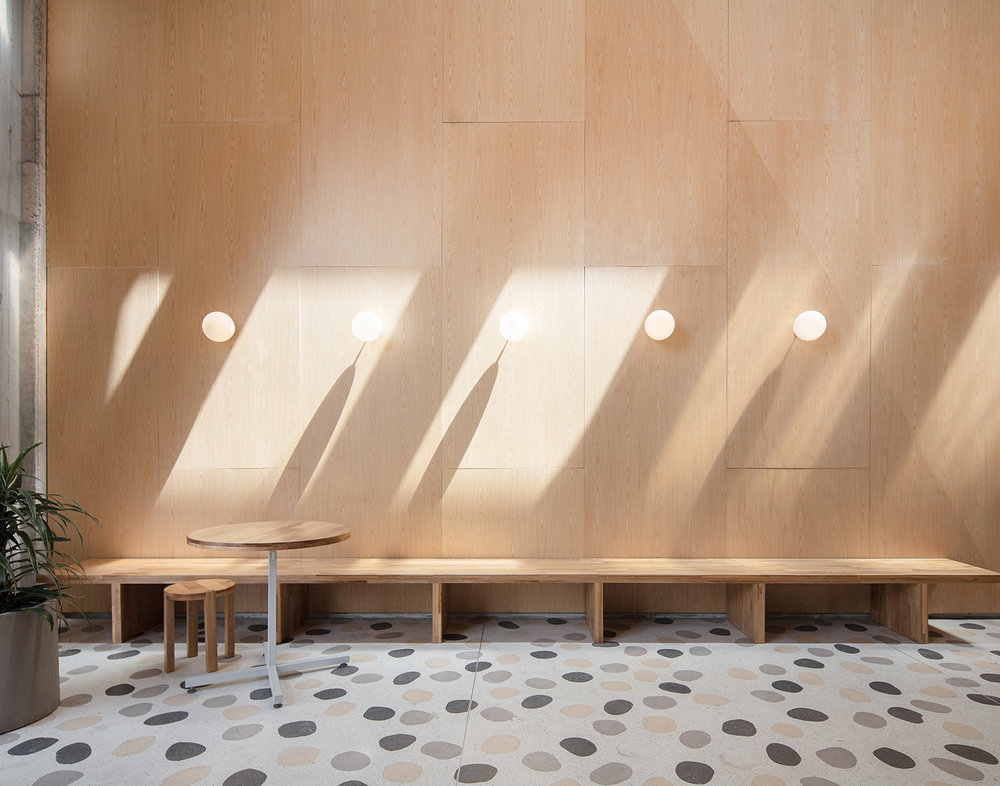
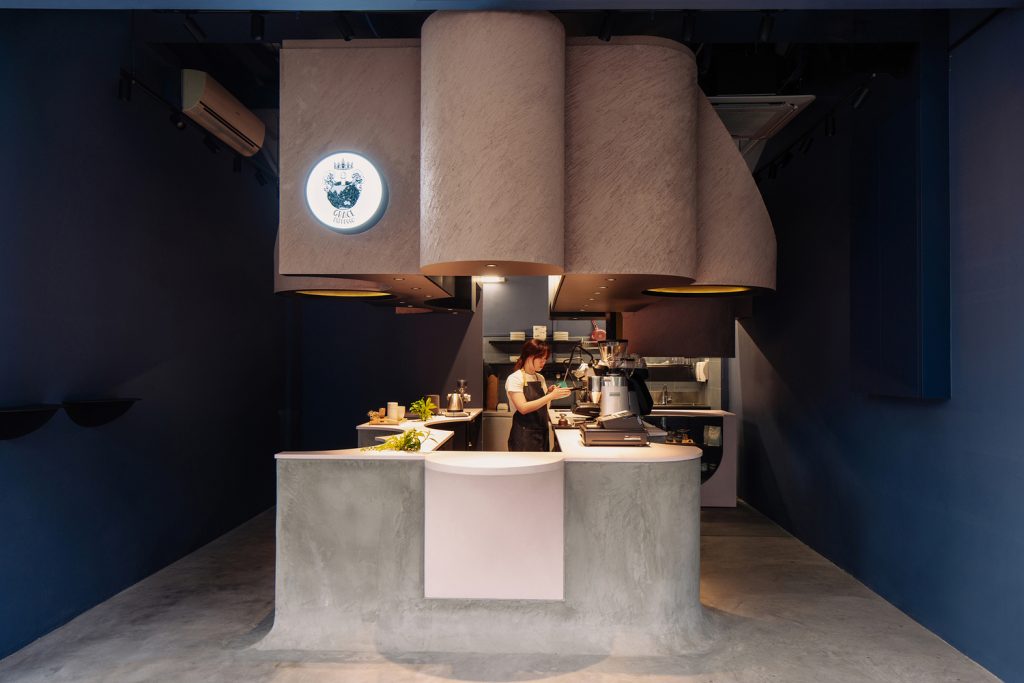
Voids café by Studio SKLIM
Designing this tiny café, Singapore-based Studio SKLIM has drawn inspiration from the empty space in a coffee cup or a matcha bowl. Circular shapes and negative spaces define the geometry of the space, from seating booths and countertops to display shelves and overhanging canopies. The whole space is formed by subtraction and addition that create the operational and anthropometrical needs of the café.
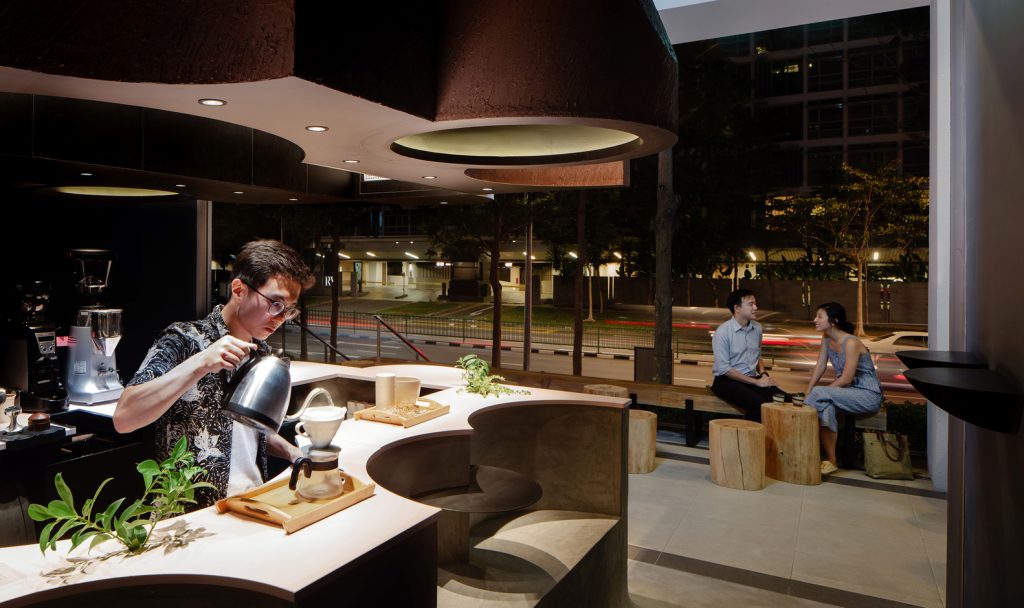
Voids café by Studio SKLIM
Challenged to balance the numerous kitchen inventory with customer zones within this condensed space, the team managed to use every nook to add to the experience. 28 sqm of the floorplan include a retail corner, a take-away counter, seating booths and even a small ‘Ritual Counter’ for conducting workshops and making drip coffee or bowls of powdered Japanese green tea (matcha).
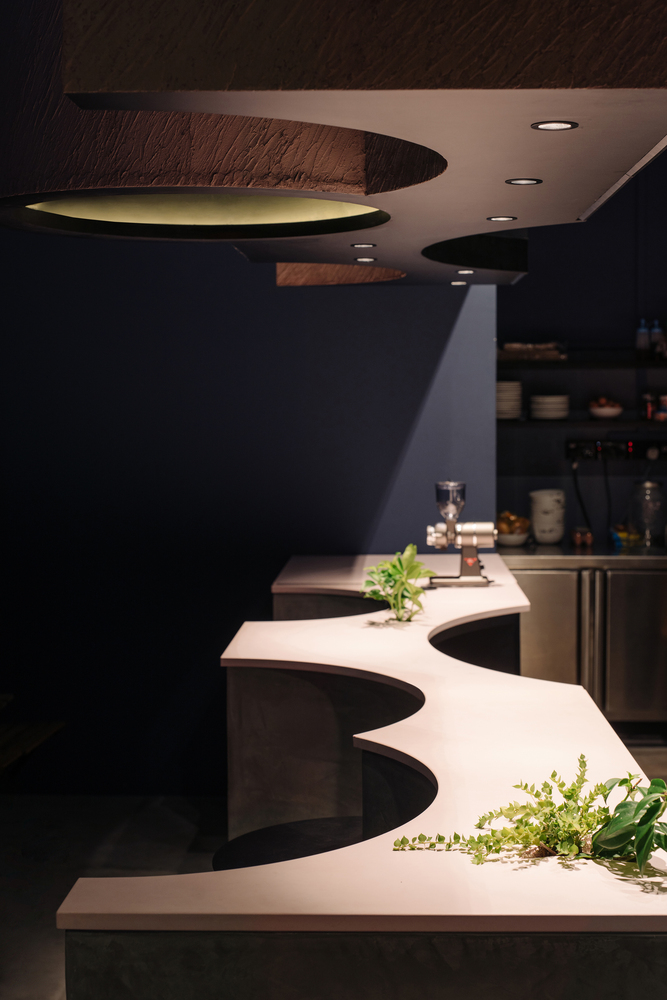
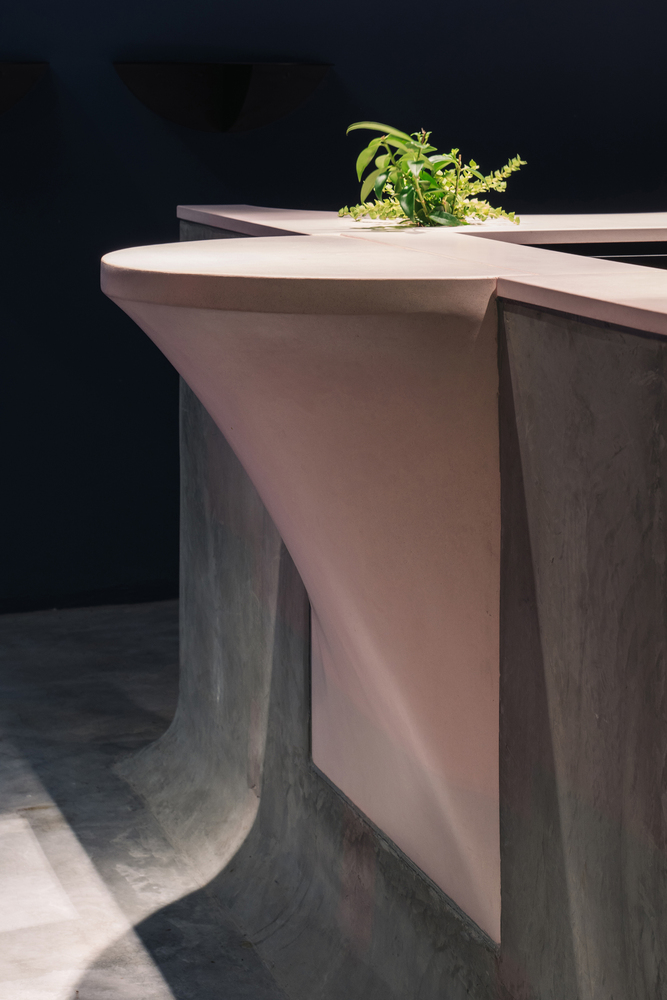
Voids café by Studio SKLIM
The main powdered pink concrete counter top is custom-cast in 11 separate pieces, with cracks purposefully cast in them to allow greenery to emerge from under the counters, similar to plants growing on old buildings. Counter spaces are carved out to bring customers in closer interaction with barista and the coffee making process, with its aroma and grinding sounds. Seating booths are cut out in the concrete counters, with matching circular metal petals added to serve as tables.
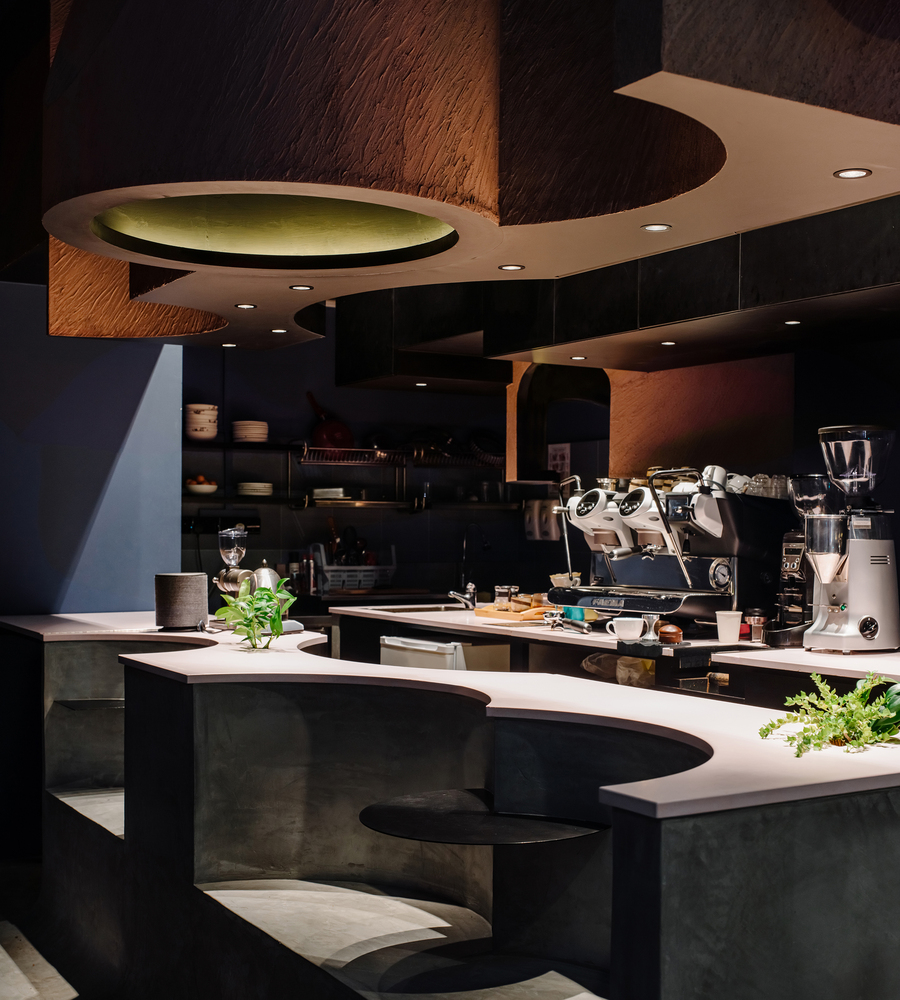
Voids café by Studio SKLIM
The entire volume hovers from the ceiling with no supports connecting the bottom countertop mass, which creates an illusion of surreal lightness. The textured stucco covering the overhanging volume is inspired by coffee grounds and makes the whole structure look like an anti-gravity coffee cloud. The overhanging experience corner is designed as a suspended enclosure where customers can duck under and experience the smell of different coffee grounds and tea products.
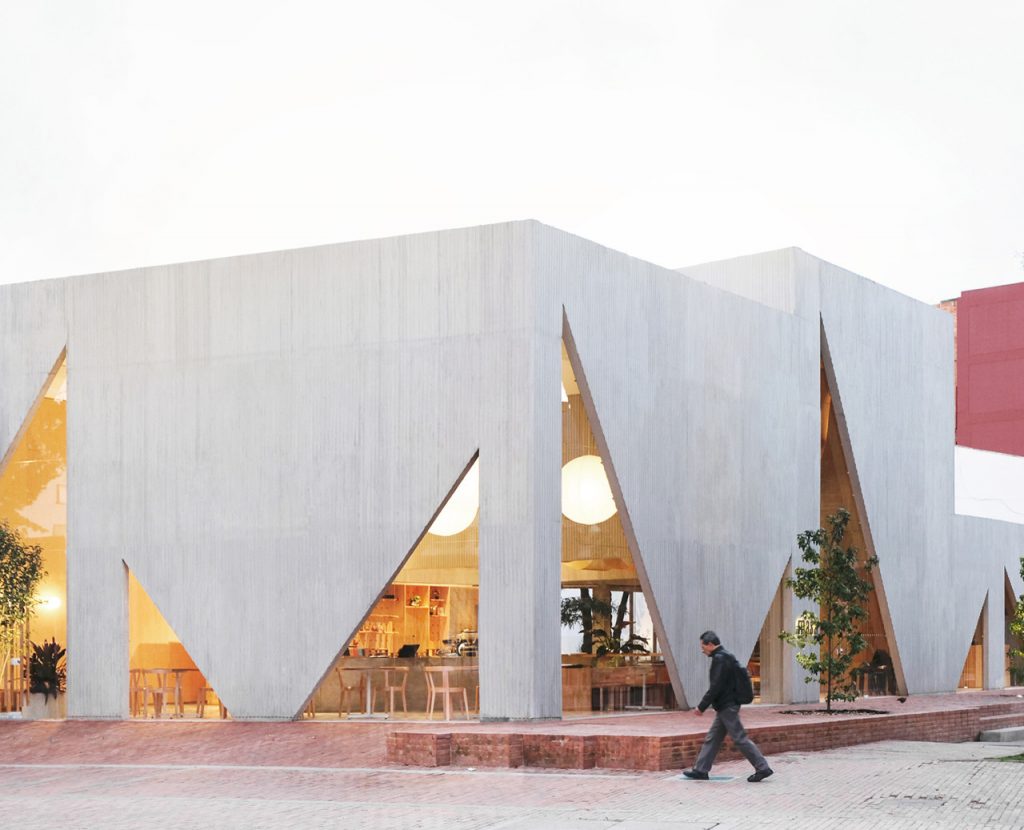
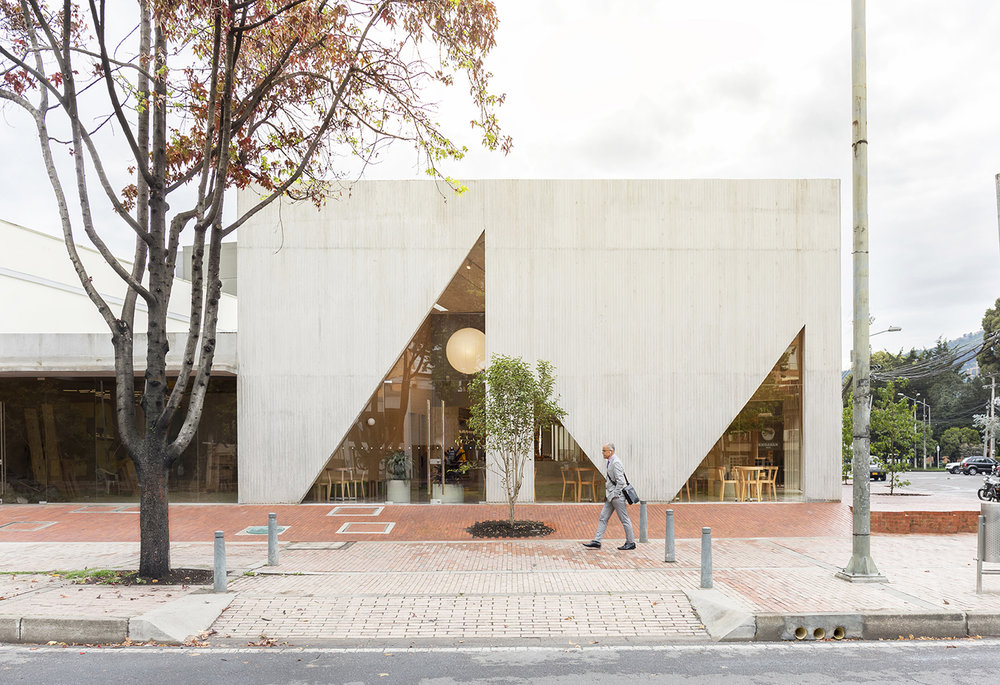
Masa café by Studio Cadena (also header image)
Designed by Brooklyn-based Studio Cadena, Masa, 700 sqm multi-purpose building located in Bogota neighborhood of Usaquén, includes a modern cafe, a bakery, and a retail space, that are organized as separate but interconnected volumes, with large triangular windows cut into the textured concrete walls. When illuminated from within, the windows reveal the life inside and tempt passers-by to peer.
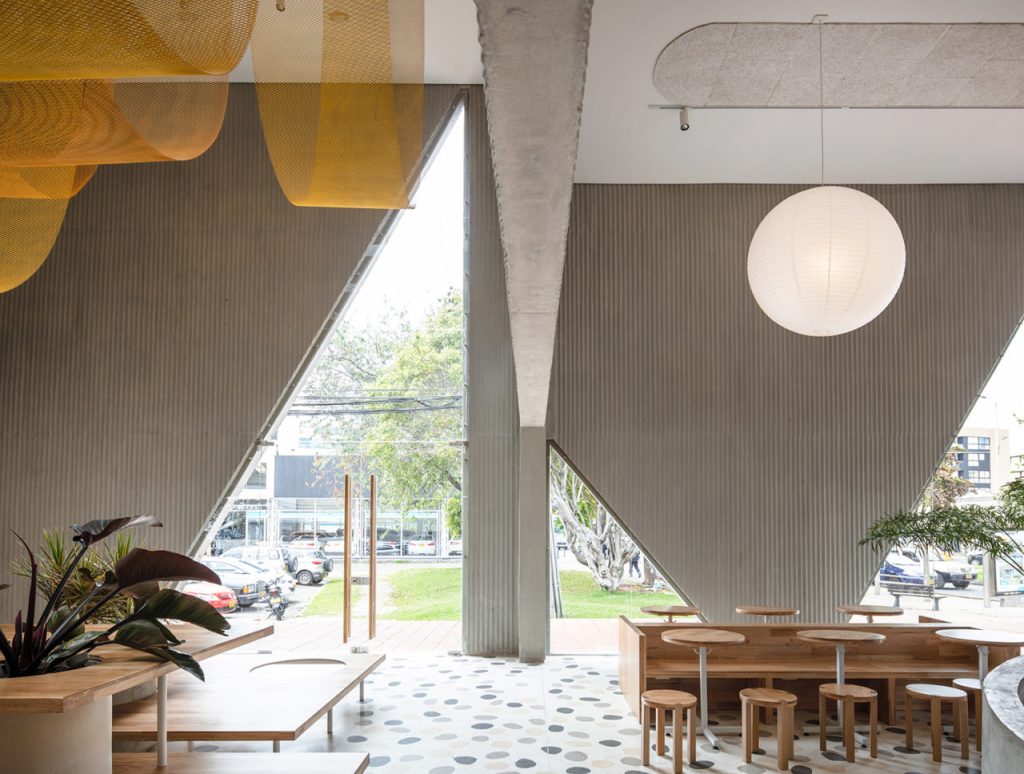
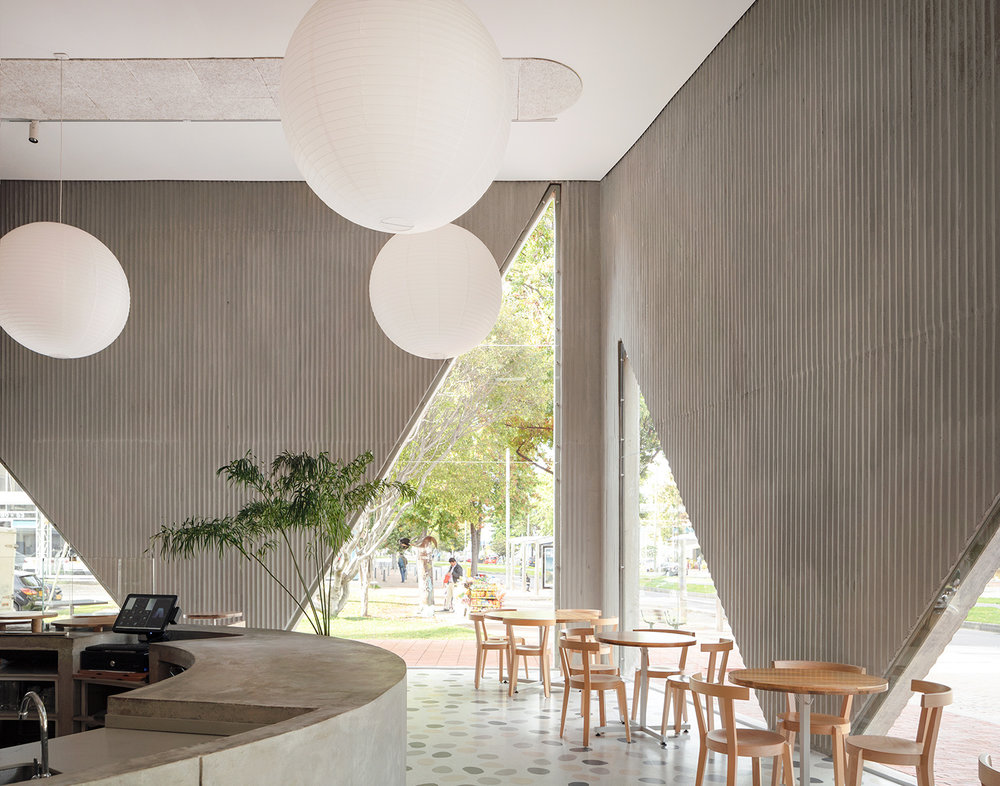
Masa café by Studio Cadena
Inside, different ceiling heights, lighting, and seating conditions form the space, simultaneously offering the freedom of an open plan, and lend each zone its unique character. A quiet outdoor patio shaped around an existing tree provides shaded seating and connects the public to food production areas in the rear.
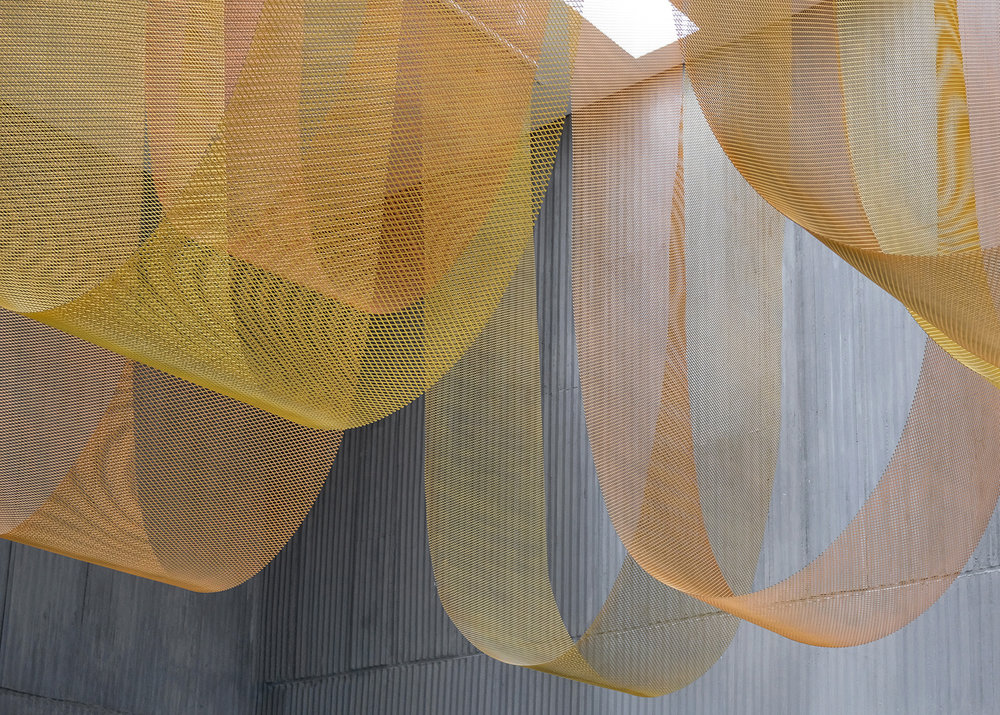
Masa café by Studio Cadena
The choice of materials includes warm wood for walls, terrazzo tiles, and golden swaths of metallic mesh hanging from the ceiling. The linear architecture is contrasted to the curvilinear details, such as a circular cast concrete bar, round skylights, windows, and mirrors throughout. The ideal balance is maintained between the internal and external as well as the public and private.
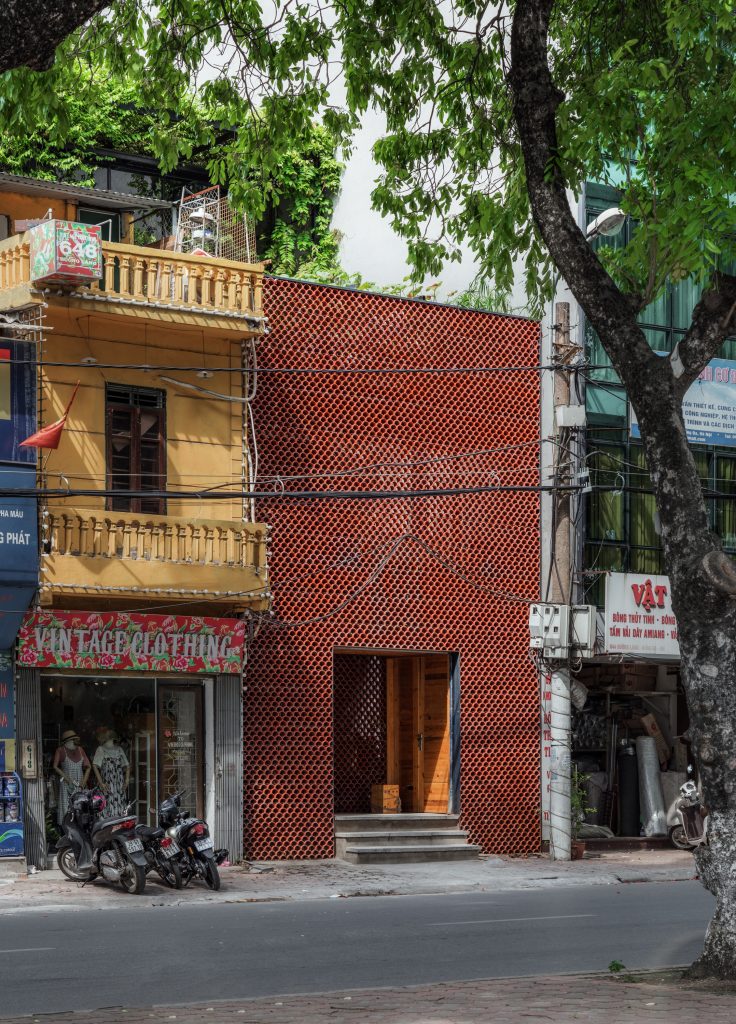
KOI café by Farming Architects
In Hanoi, an existing three-storey building was transformed into a green oasis of a café by the local studio Farming Architects. Entitled the KOI café, it comprises a self sustaining eco-system with a fish pond, an indoor waterfall and a rooftop vegetable garden.
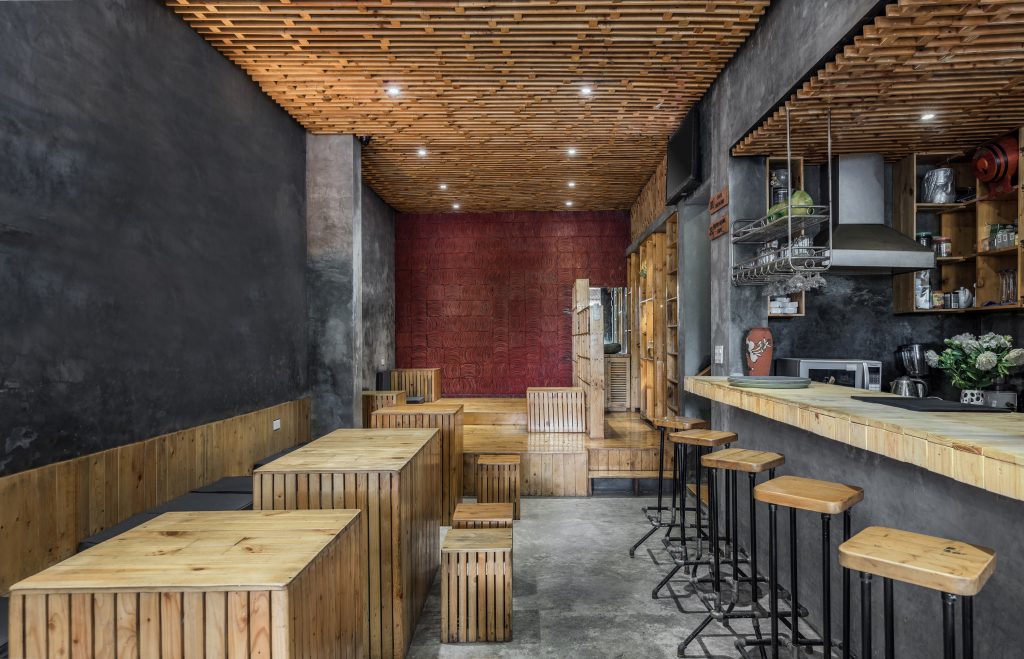
KOI café by Farming Architects
Inside, the entire interior including the furniture is made from wood of repurposed pallets provided from the owner. Tendrils of plants hang down through the mesh roof structures on both floors, with natural daylight filtering through the double-height atrium.
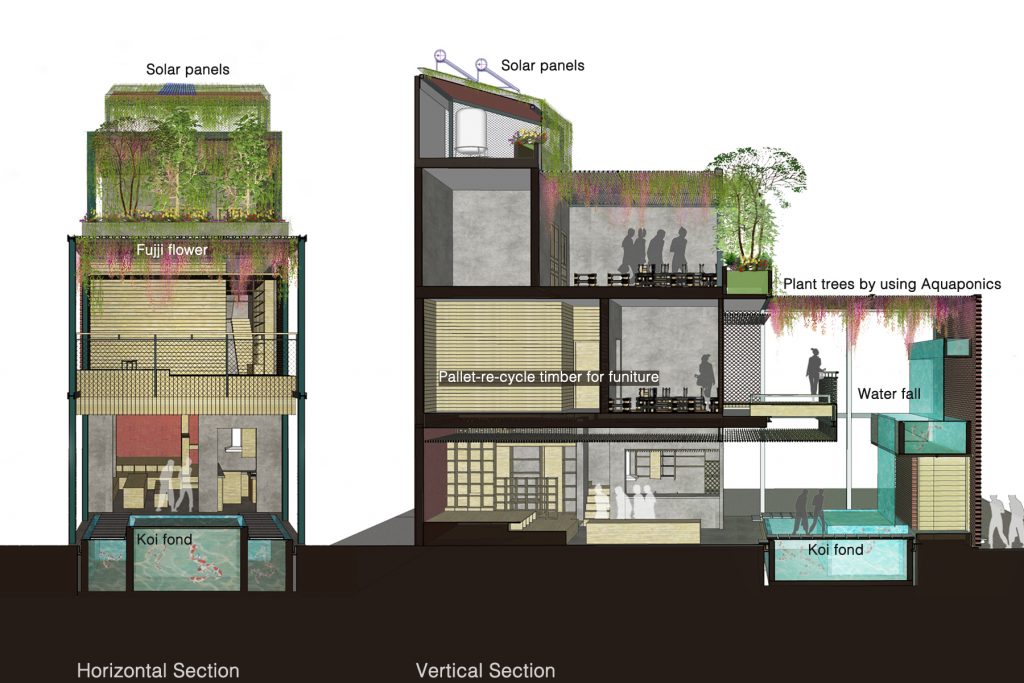
KOI café by Farming Architects
An indoor waterfall flows down from the second floor to a tank on the first floor and then down into a pond filled with koi carp – a breed of fish highly prized for its colourful scales and known as the Japanese national fish. The inspiration for the waterfalls were taken from the mythology surrounding koi carp. Chinese legend says if a carp could leap over a waterfall on the Yellow River, called the Dragon Gate, it would be transformed into a dragon and fly away. At the same time the water feature is not just symbolic, it also oxygenates the water for the fish.
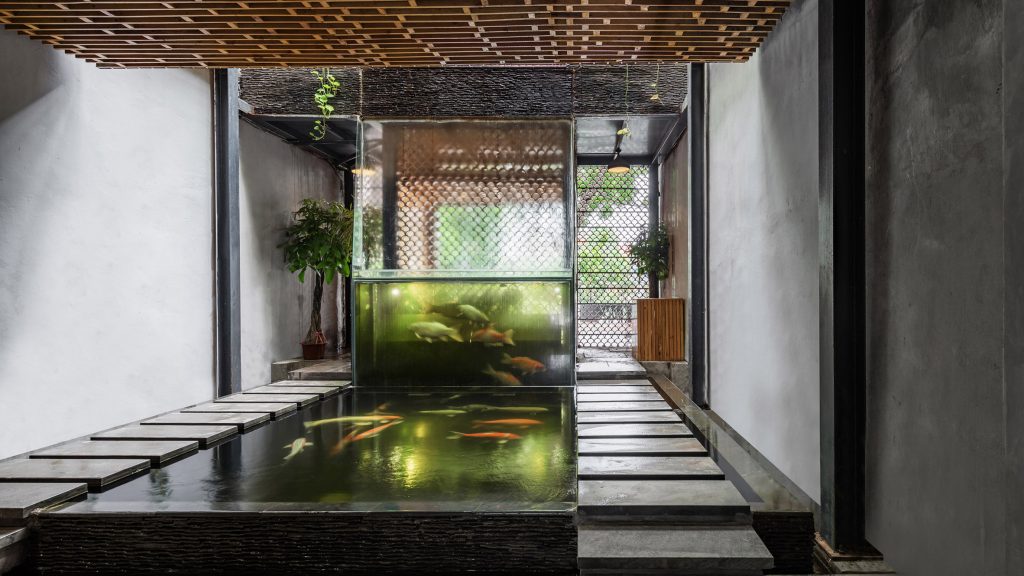
KOI café by Farming Architects
The visitor of the café have several possibilities to “interact” with the fish, from occupying one of the tables on the ground floor looking out over the waterfall and the pond to dangling their feet over the fish swimming below while sitting on a bench fitted over the aquarium on the first floor.
Ammonia excreted by the fish is then transformed into nitrates which can be then used by the trees growing there, while the vegetation planted in the soil help purify the water, which is returned to the aquariums.
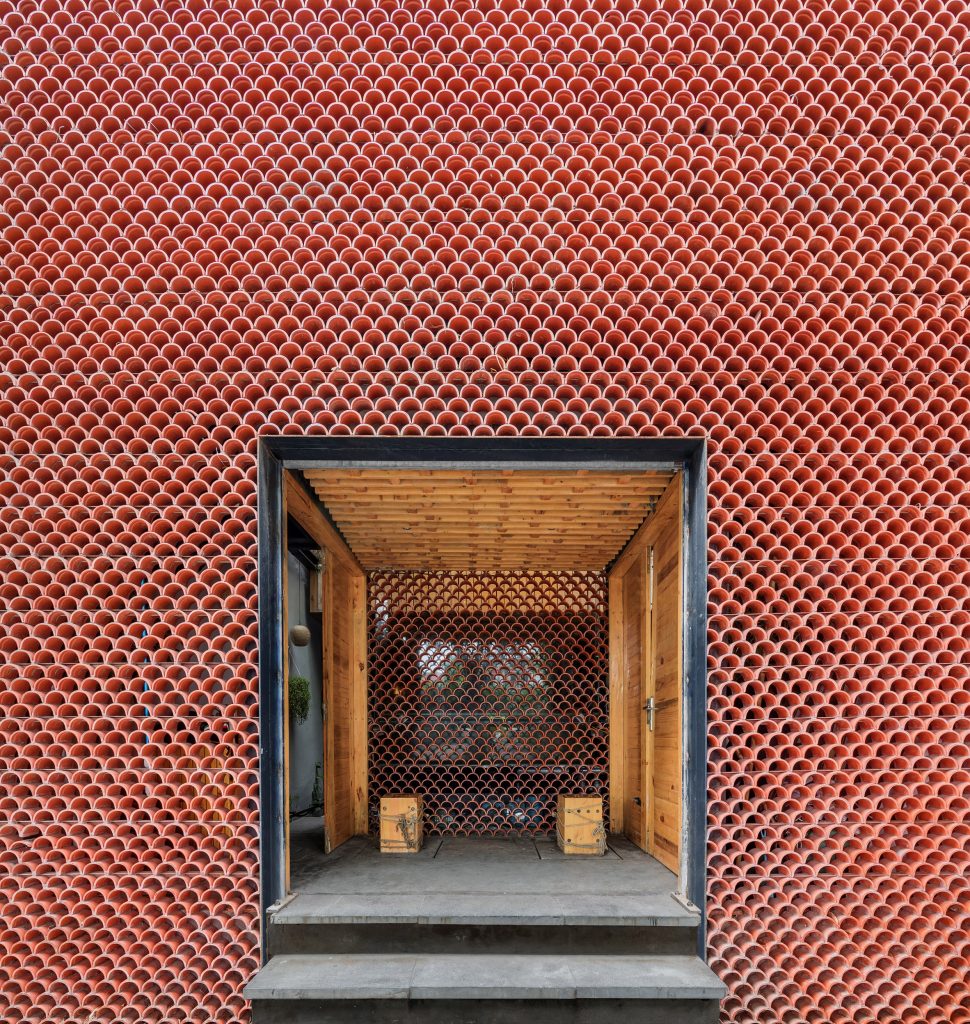
KOI café by Farming Architects
Outside, the fish theme is reflected in the Batrang double traditional tiles on the façade, which overlap in a pattern reminiscent of the scales of the koi carp.